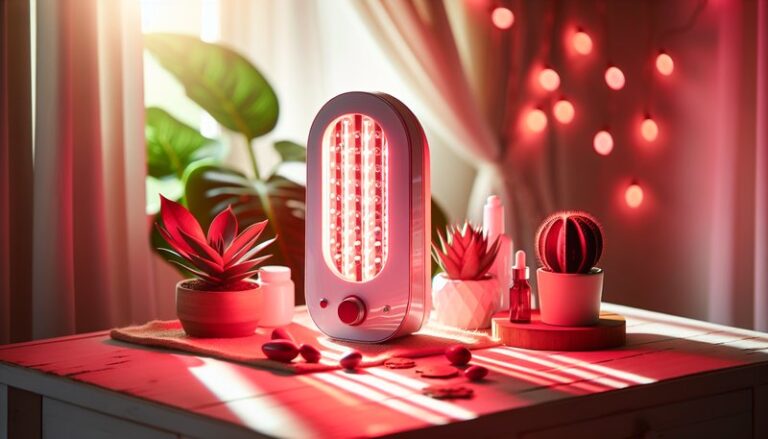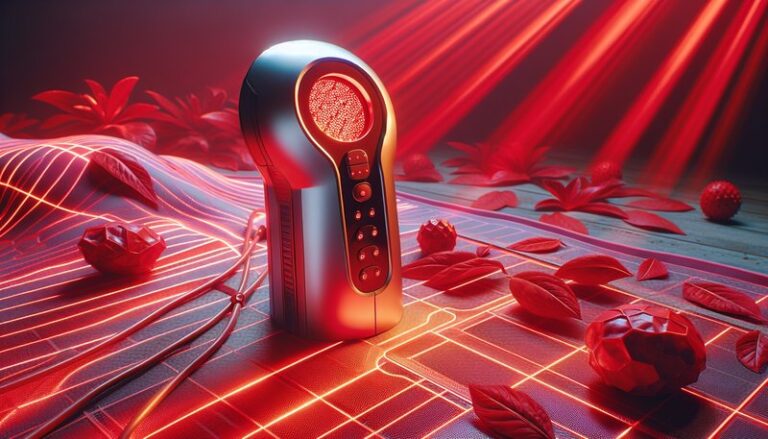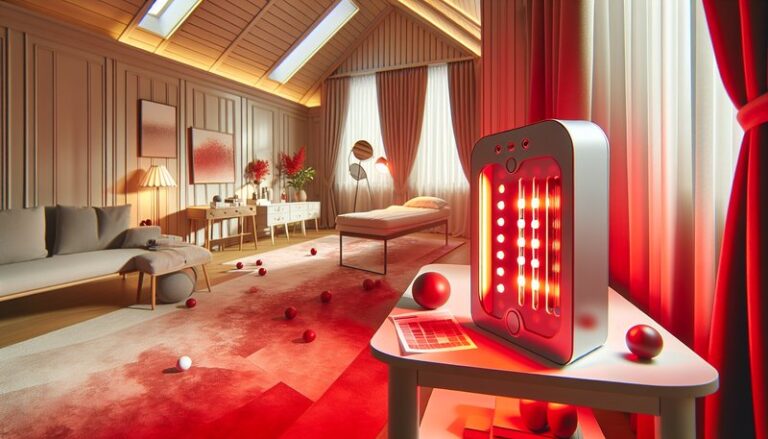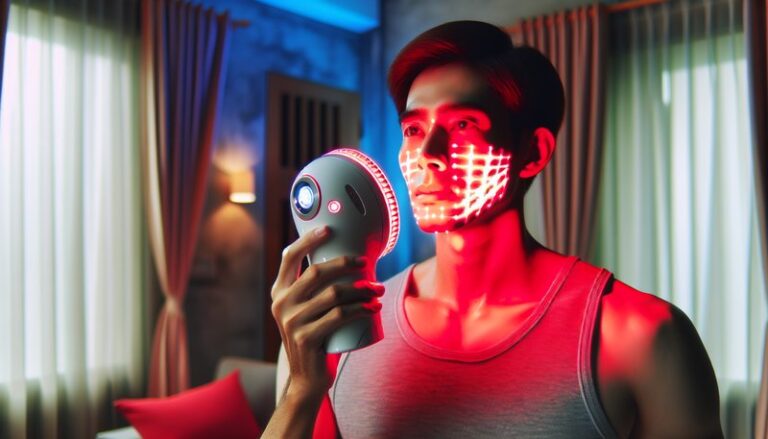How Does Red Light Therapy Help Hair Growth?
How Does Red Light Therapy Help Hair Growth?
Have you ever wondered if there’s a way to jumpstart your hair growth naturally? Red light therapy might be the answer you’ve been searching for.
In this article, we will explore how red light therapy works, its benefits for hair growth, and what you need to consider before trying this innovative treatment. We will also look into alternatives and address common questions related to red light therapy and hair restoration.
Key Takeaways
- Red light therapy stimulates hair follicles by enhancing cellular activity, promoting hair growth.
- This treatment is non-invasive, making it a safe option for those looking to improve hair density and thickness.
- The therapy can be used in conjunction with other hair loss treatments for synergistic effects on hair restoration.
What is Red Light Therapy?
Red light therapy (RLT) involves using specific wavelengths of light—typically between 600 to 650 nanometers—to penetrate the skin and stimulate cellular function. This therapeutic approach has gained popularity not only for hair growth but also for skin rejuvenation, pain relief, and wound healing.
See why in Frequency of Red Light Therapy for Pain
The primary mechanism of action for red light therapy is photobiomodulation, where light energy boosts mitochondrial function in cells. This energy enhancement leads to increased adenosine triphosphate (ATP) production, fostering improved cell metabolism, regeneration, and overall health.
How Does It Work for Hair Growth?
When applied to the scalp, red light therapy can improve blood circulation, increase oxygen supply, and stimulate the hair follicles. This can lead to improved hair density and health, making it a compelling option for individuals with thinning hair or conditions like androgenetic alopecia.
What are the Benefits of Red Light Therapy for Hair Growth?
Understanding the benefits of red light therapy can help individuals appreciate its potential in combating hair loss and enhancing hair health.
Improved Hair Density
Studies reveal that consistent use of red light therapy can lead to a significant increase in hair counts. For instance, one clinical trial showed a 20% increase in hair density after 24 weeks of treatment.
Non-Invasive and Safe
Red light therapy does not involve any surgical procedures and is generally well-tolerated, with minimal side effects reported. This makes it an appealing option for those hesitant about traditional hair transplant surgeries.
Enhanced Hair Health
Beyond promoting growth, red light therapy can improve the overall condition of hair by reducing inflammation and encouraging healthier follicles. Healthier follicles translate into stronger hair, which is less prone to breakage.
Boosts Self-Esteem
For many, improved hair growth can significantly enhance self-esteem and confidence. Feeling good about one’s appearance often leads to a positive ripple effect on mental health and overall quality of life.
Is it Possible to Use Red Light Therapy at Home?
Yes, many individuals choose to utilize red light therapy at home using handheld devices or specialized caps designed for scalp treatment. This accessibility allows users to incorporate therapy into their daily routine conveniently.
What are the Advantages of At-Home Treatment?
This approach offers users flexibility and cost savings compared to in-office treatments. For those who prefer privacy or have busy schedules, at-home devices make it easy to stick to a consistent routine.
What are the Disadvantages of At-Home Treatment?
While at-home devices can be effective, they may not provide the same strength or precision as professional equipment. Consequently, users might need to commit to longer sessions or more frequent treatments for optimal results.
What are the Things to Consider Before Starting Red Light Therapy?
Before beginning red light therapy for hair growth, there are several important factors to consider for the best possible outcome.
See our post on Can red light cause sunburn?
Consultation with a Professional
It’s advisable to consult with a dermatologist or a trichologist to assess individual hair loss conditions and determine if red light therapy is appropriate for your case.
Consistency is Key
For red light therapy to be effective, users must commit to a consistent schedule. Treatments are typically recommended multiple times a week over several months to see visible results.
Monitor Results
Keep track of hair growth progress by taking before-and-after photos. This can help motivate you and determine whether the treatment is working for your hair type.
Evaluate Device Quality
If you opt for a home device, research the product quality, including wattage, wavelength, and customer reviews to ensure you’re investing in an effective tool.
What are the Alternatives to Red Light Therapy?
If you’re considering other options for hair growth treatment, here are some potential alternatives.
Minoxidil
Minoxidil is a widely used topical treatment that stimulates hair follicles and encourages hair growth. It is FDA-approved and can be effective for many individuals dealing with hair thinning.
Finasteride
Finasteride is an oral prescription medication that prohibits the conversion of testosterone to dihydrotestosterone (DHT), a hormone linked to hair loss. This medication is particularly effective for male pattern baldness.
Hair Transplant Surgery
For those with substantial hair loss, hair transplant surgery can be a viable option. This procedure involves relocating hair follicles from one part of the scalp to thinning areas.
Nutritional Supplements
Supplements containing biotin, vitamins, and minerals essential for hair growth can support overall hair health. A balanced diet rich in these nutrients can also promote better results.
Conclusion: Is it Recommended to Try Red Light Therapy for Hair Growth?
Red light therapy could be a beneficial addition to your hair restoration regimen, offering a non-invasive, scientifically supported option for promoting hair growth. While individual results may vary, the potential benefits outweigh the risks for many people.
Frequently Asked Questions
How long does it take to see results from red light therapy?
Results can typically be seen in about 3 to 6 months of consistent use, but individual outcomes may vary based on hair loss severity and adherence to treatment.
Are there any side effects associated with red light therapy?
Red light therapy is generally safe, with few reported side effects. Occasional mild redness or irritation at the treatment site may occur but usually resolves quickly.
Can red light therapy be used in conjunction with other hair loss treatments?
Yes, red light therapy can complement treatments like minoxidil and finasteride, potentially enhancing overall effectiveness.
How often should I use red light therapy for hair growth?
Most protocols recommend 3 to 5 sessions per week for optimal results, each lasting about 20 to 30 minutes.
Is red light therapy suitable for all hair types?
Red light therapy is suitable for most hair types and conditions, although those with specific treatments or scalp issues should consult a professional before starting.






